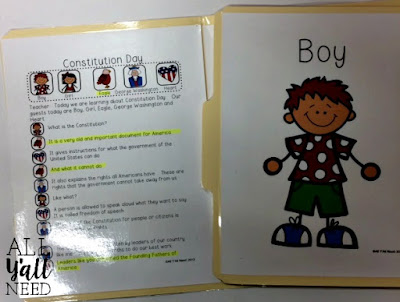Buy the big, cheap bag of variety
candy. Make sure you unwrap some
candy.
Next, break a few pieces of candy and put
the candy bits in your bag.
Also, leave some empty wrappers in the
goodie pile.
It will make sense.
This is a trick and treating lesson.
State your 4 expectations:
#1 Give an appropriate greeting
#2 Say “trick or treat”
#3 Say “thank you”
#4 Do not eat your candy
Each student must greet you and say,
“Trick or Treat” before you hand over a random piece of candy.
Or maybe a candy wrapper.
You hand them a piece of candy.
They are not allowed to pick their own
candy or grab from the sweet stash.
The response you are listening for begins
with “Thank you”.
Thank you…..for
the empty candy wrapper?
Thank you……for the candy that no one in my family likes?
If there is no “thank you” expressed,
feel free to take the candy back.
The kids sit with their candy until
everyone has been tricked or treated.
Now, you can discuss trick or treating
with your students.
Kids will express their opinions.
Especially if they only got an empty
candy wrapper.
So, be ready.
I have kids stand up if they received a
treat and ask them to explain.
“I love lollipops!”
I have kids stand up if they received a
trick. Sometimes the trick kids have to speak first. They just have to tell you about
it.
“Hey, all I got was an empty
wrapper. You already ate my candy.”
This is my effort to end drive-by trick
or treating.
Good manners are always appropriate.
Safety is always stylish.
The kids are allowed to throw the candy
away if they don’t like it.
The sweeties throw away the empty candy
wrappers and broken pieces.
You teach why the sweeties should not eat
the broken pieces.
You can remind them they don’t have to
eat all the candy on Halloween night.
After the discussion, give half of the
class a new piece of candy.
A partner will come to them to trick or
treat following the same expectations.
Repeat.
Yes, students will remind you that some
students have two pieces of candy.
At this point, you even everything up so
that all students leave with only treats.



























